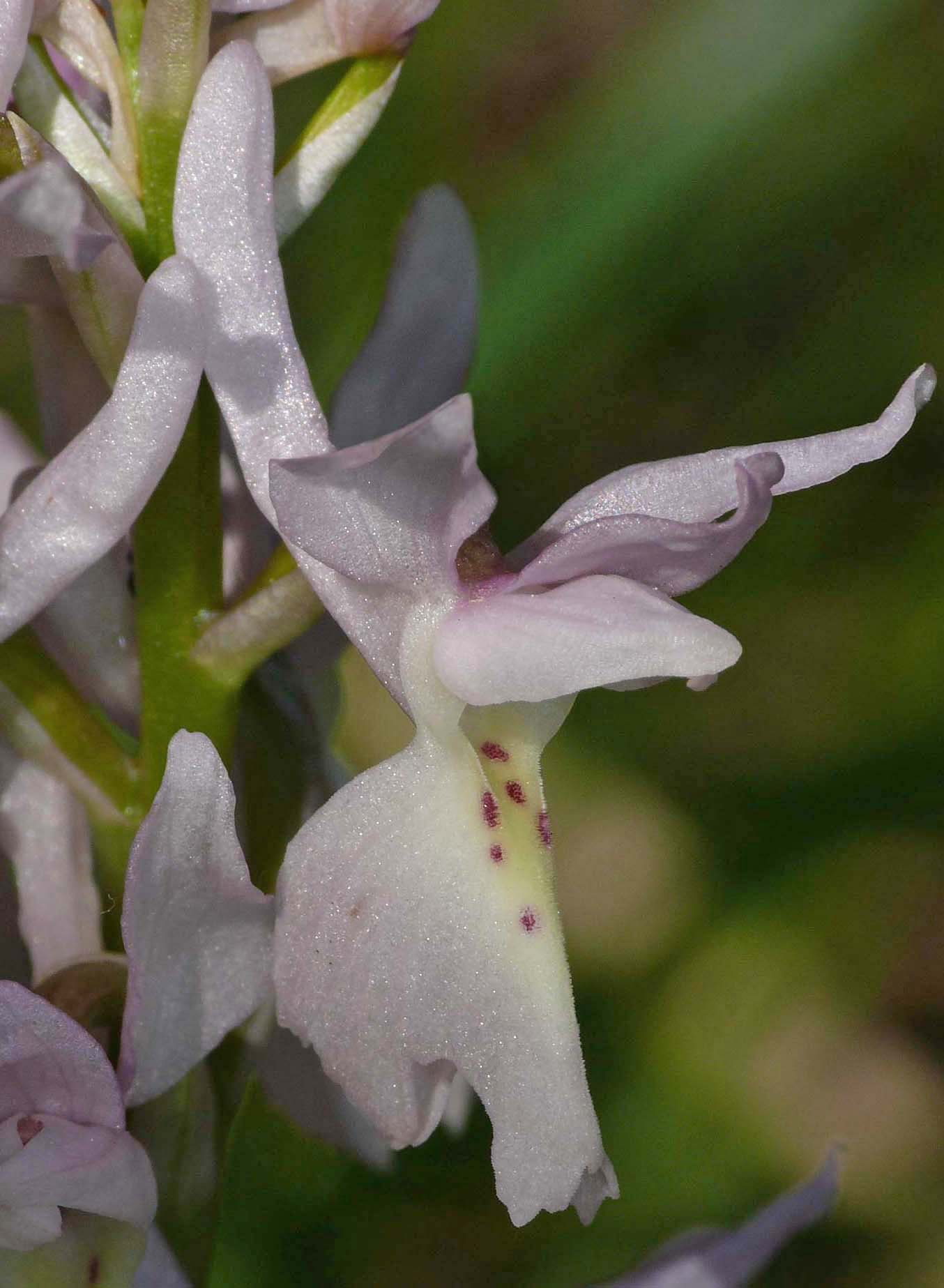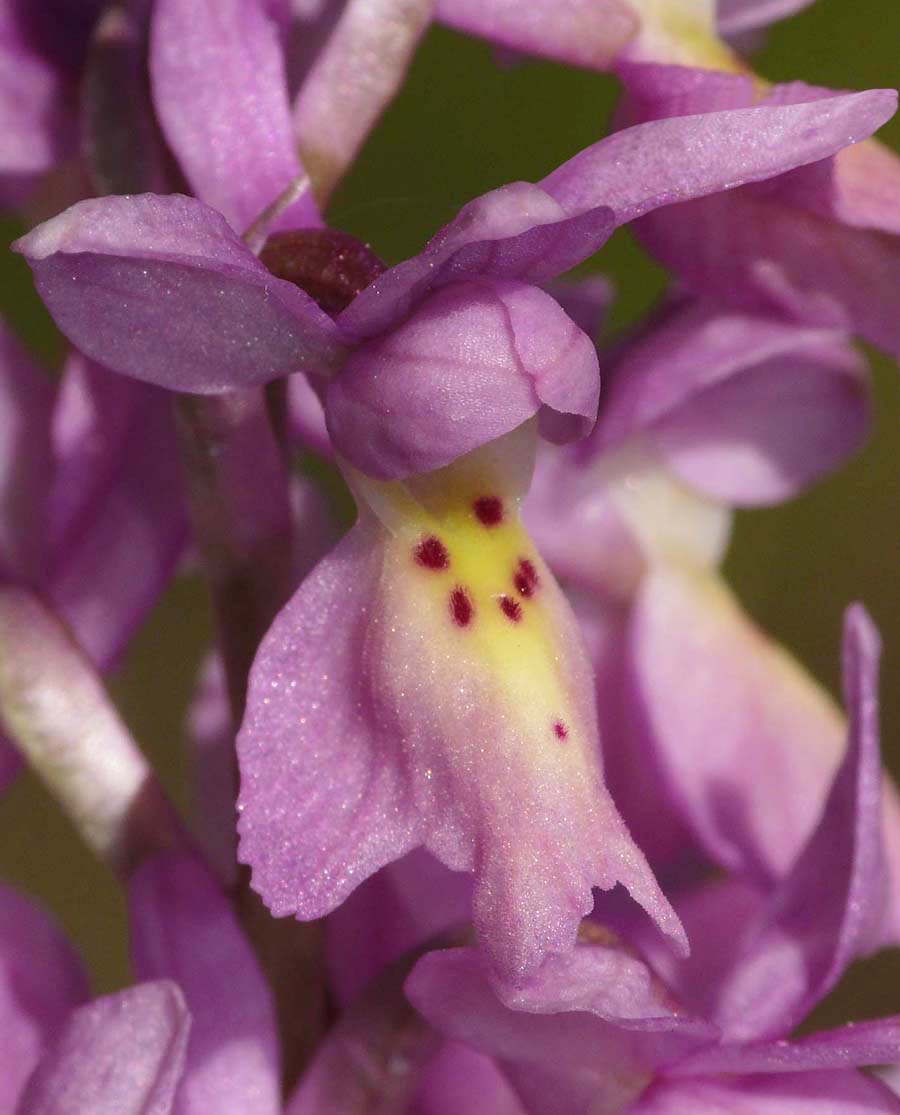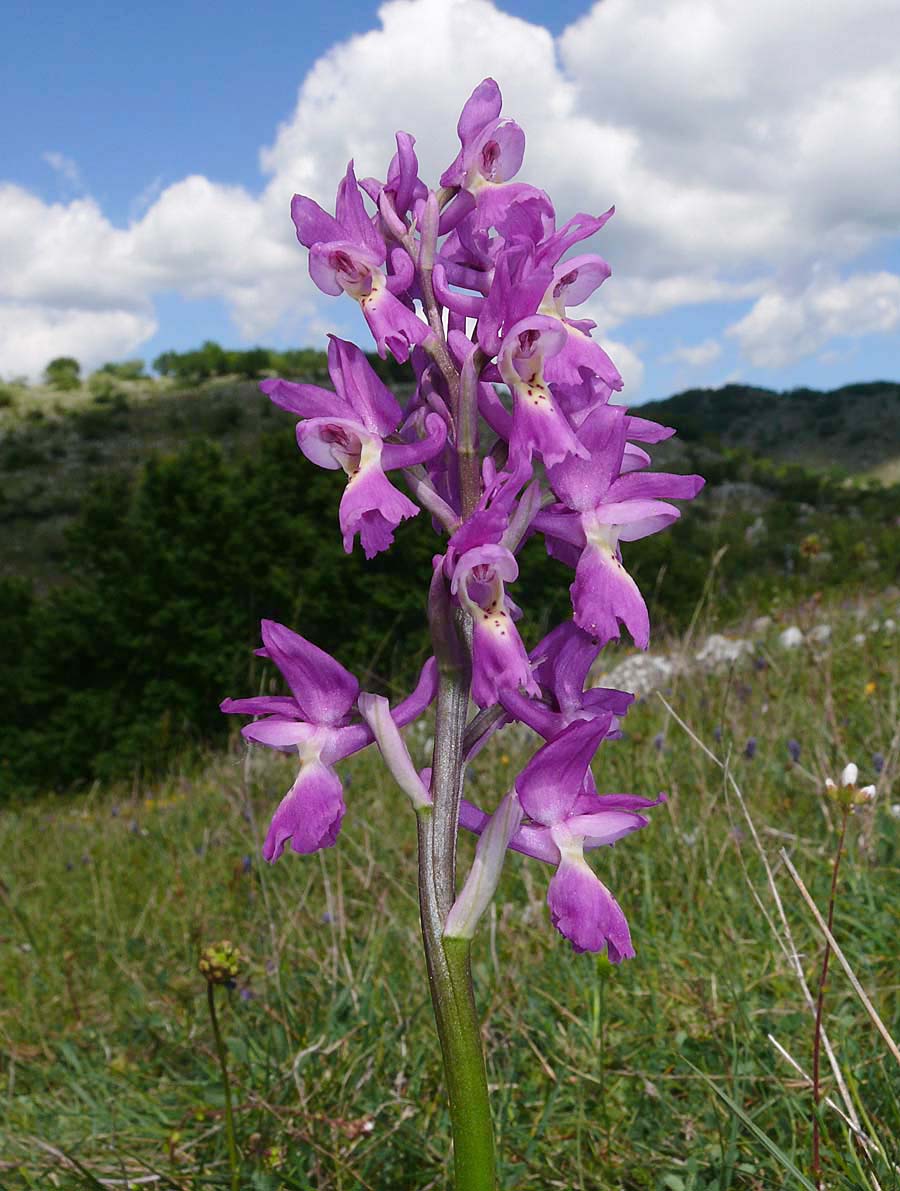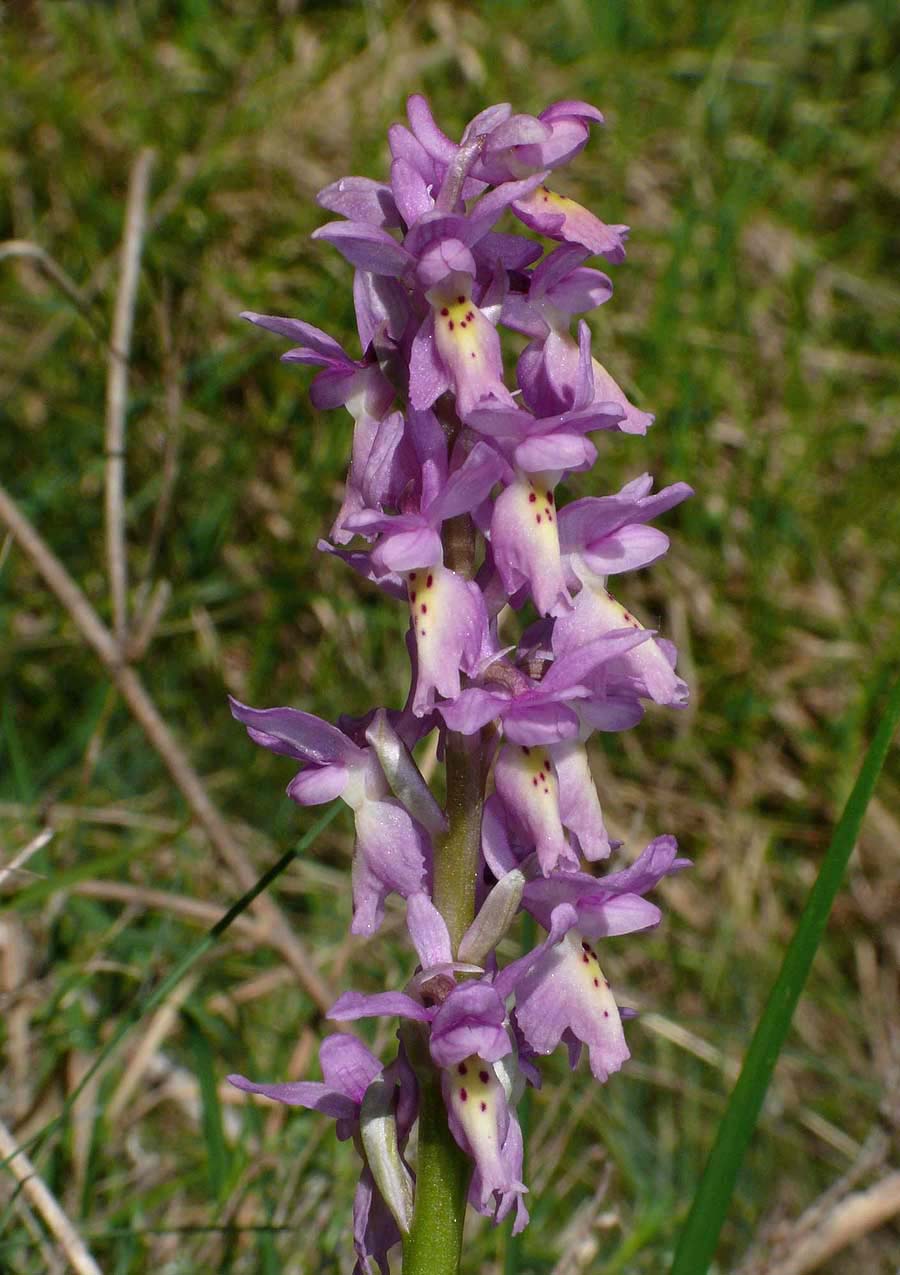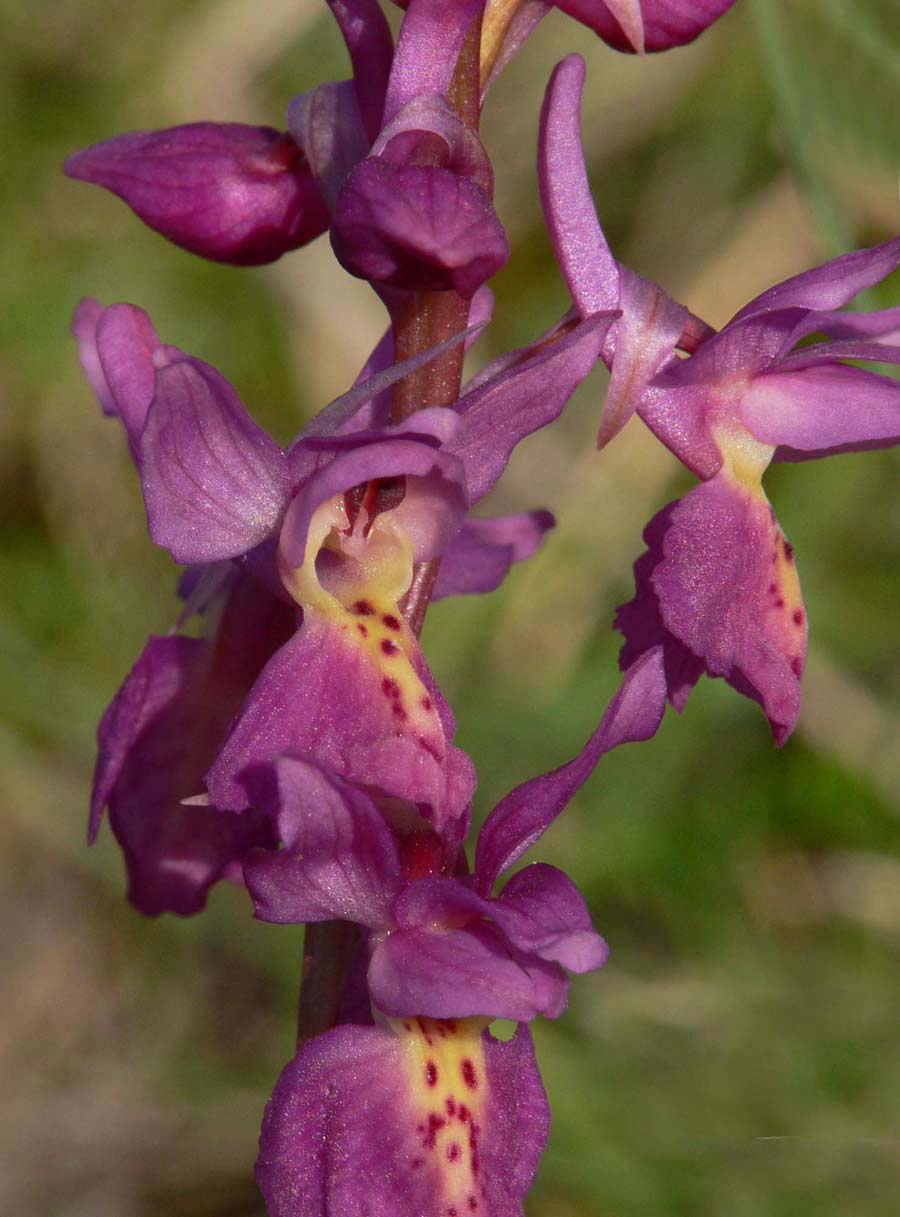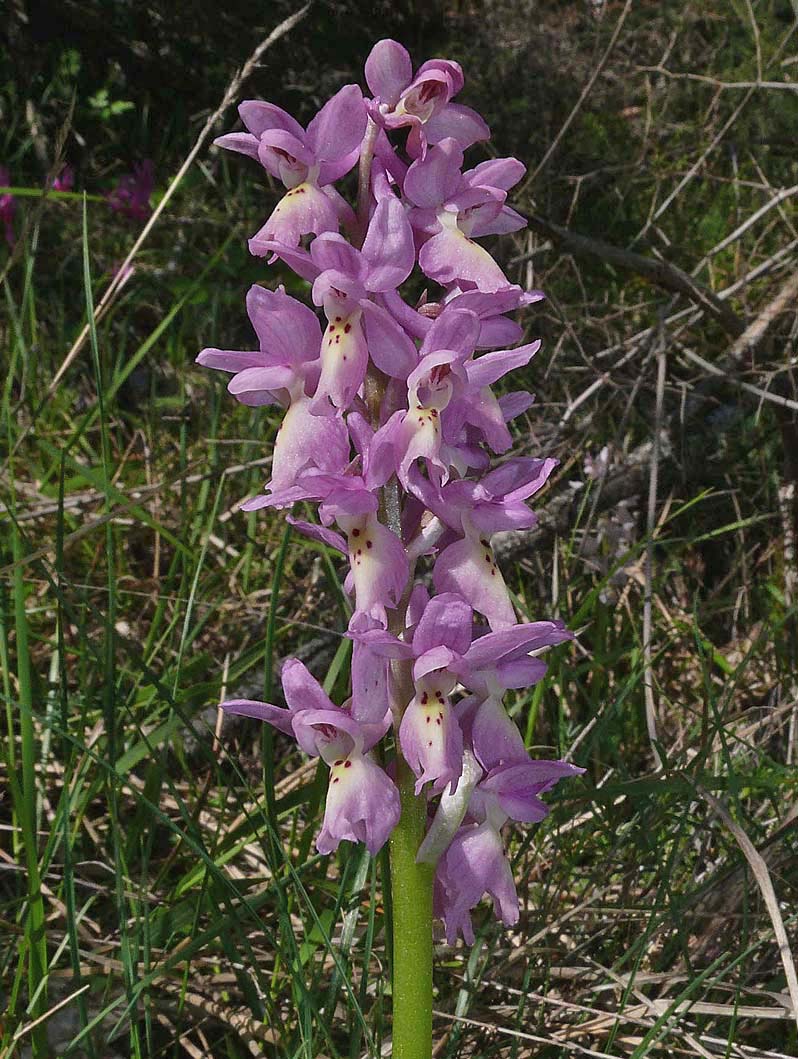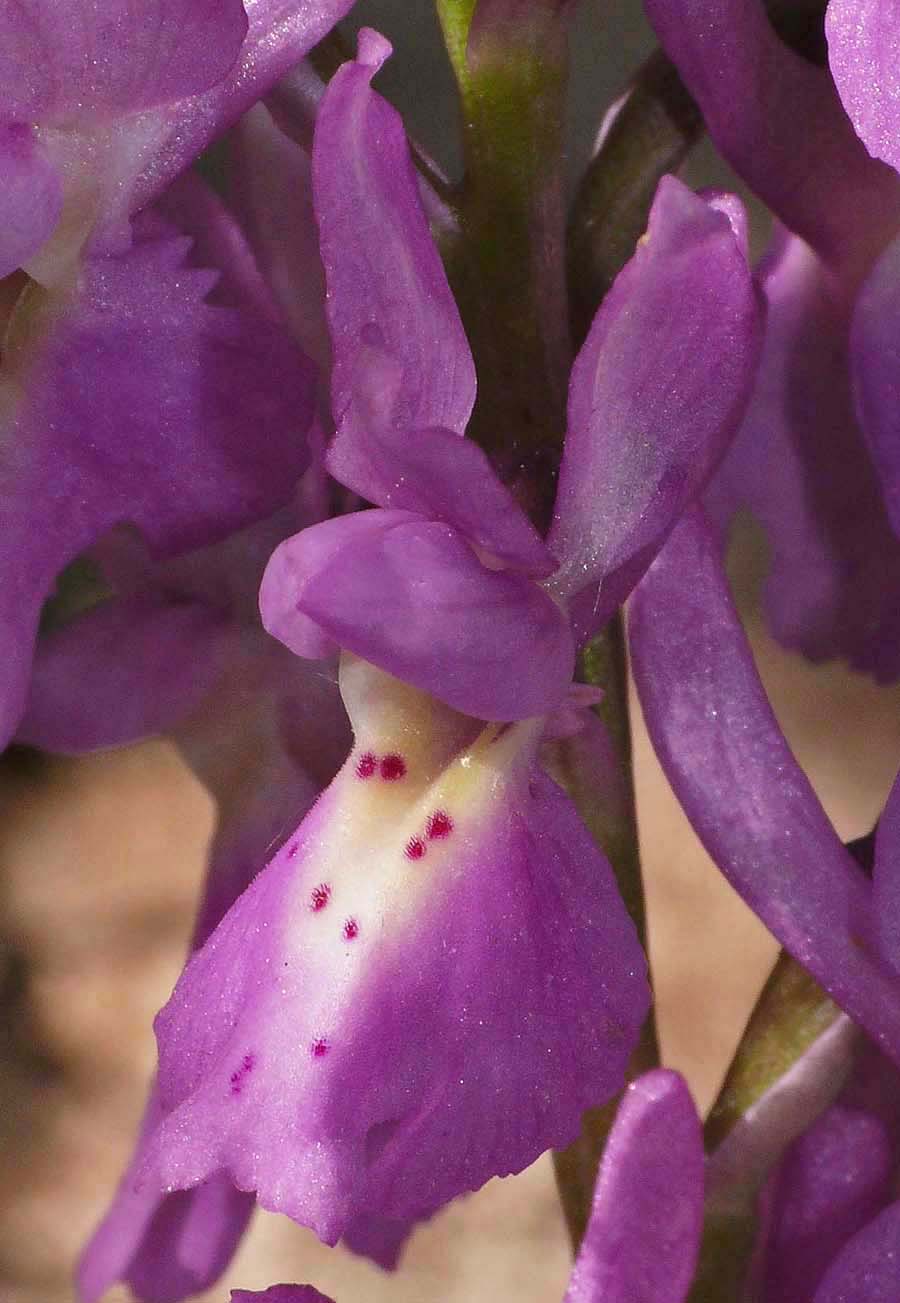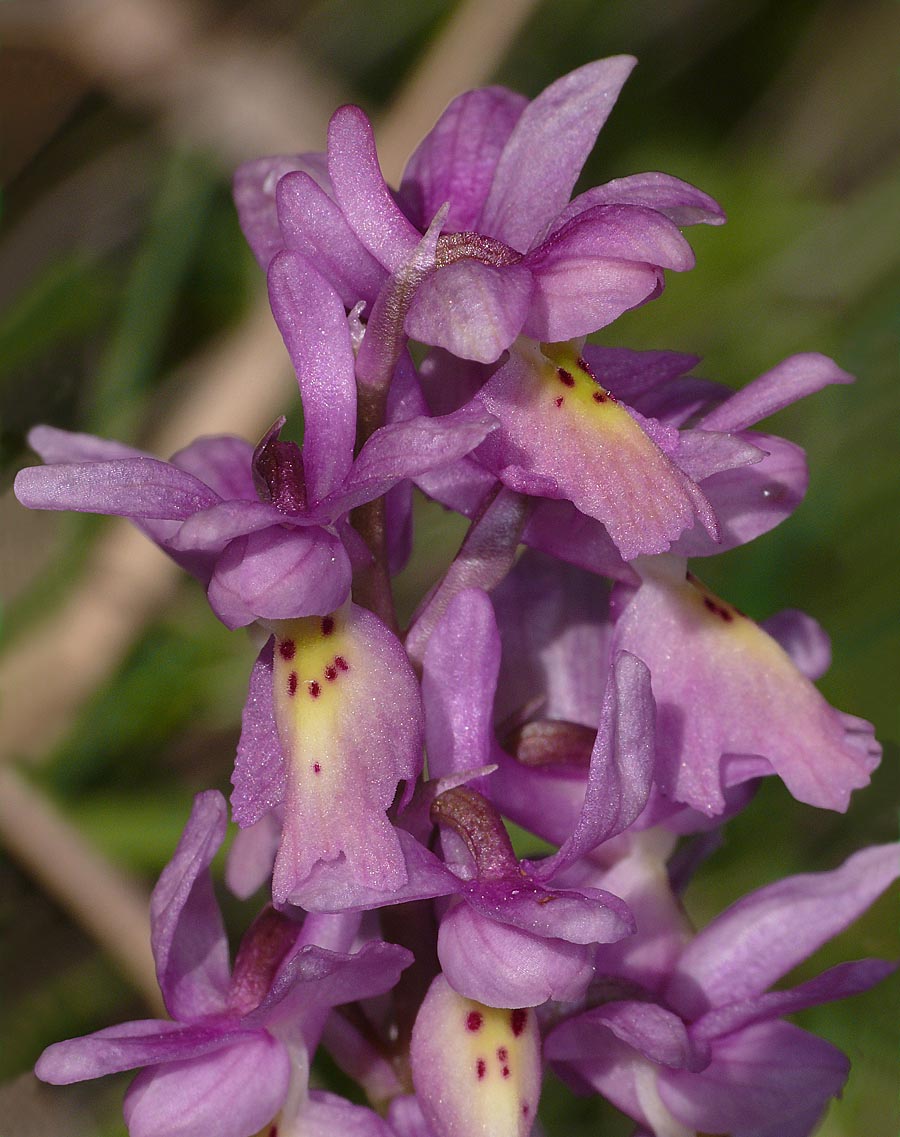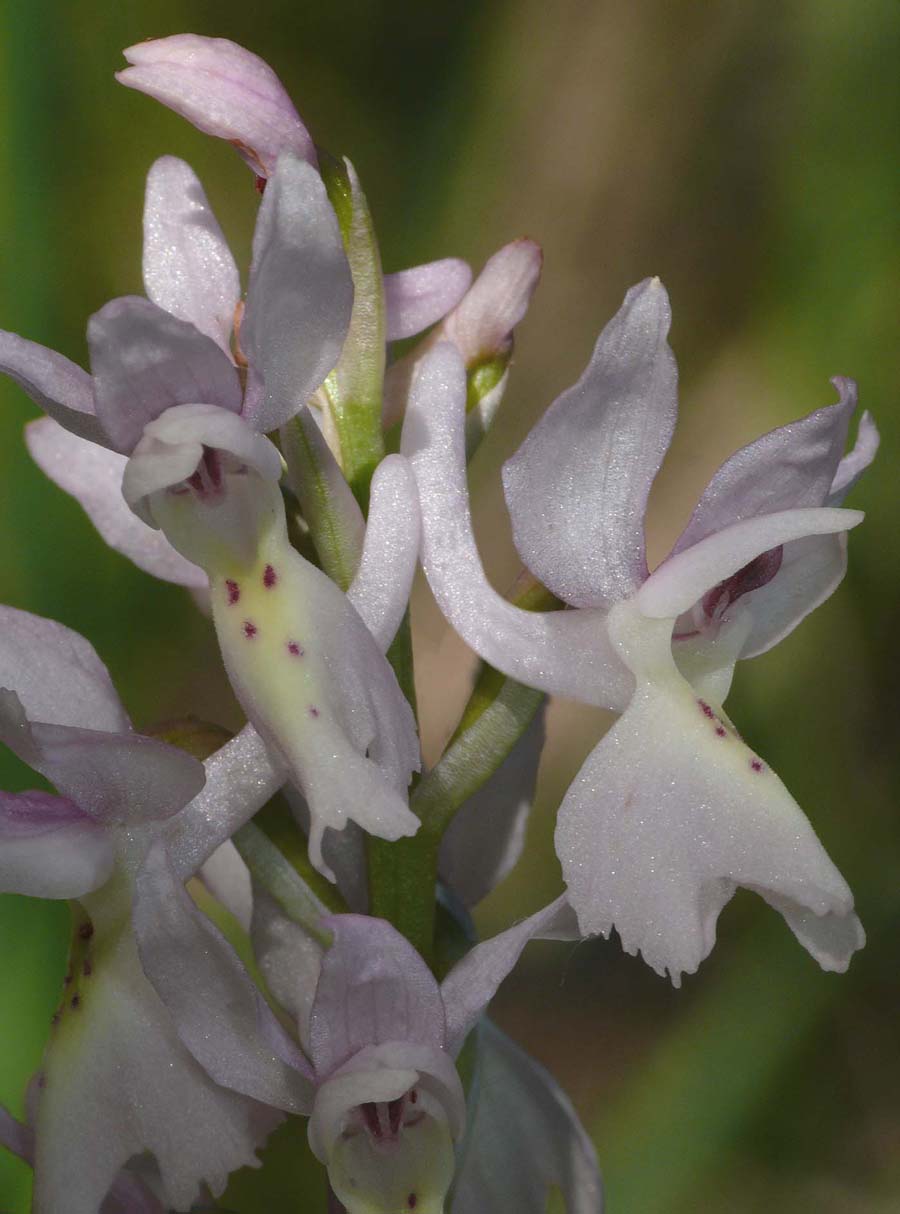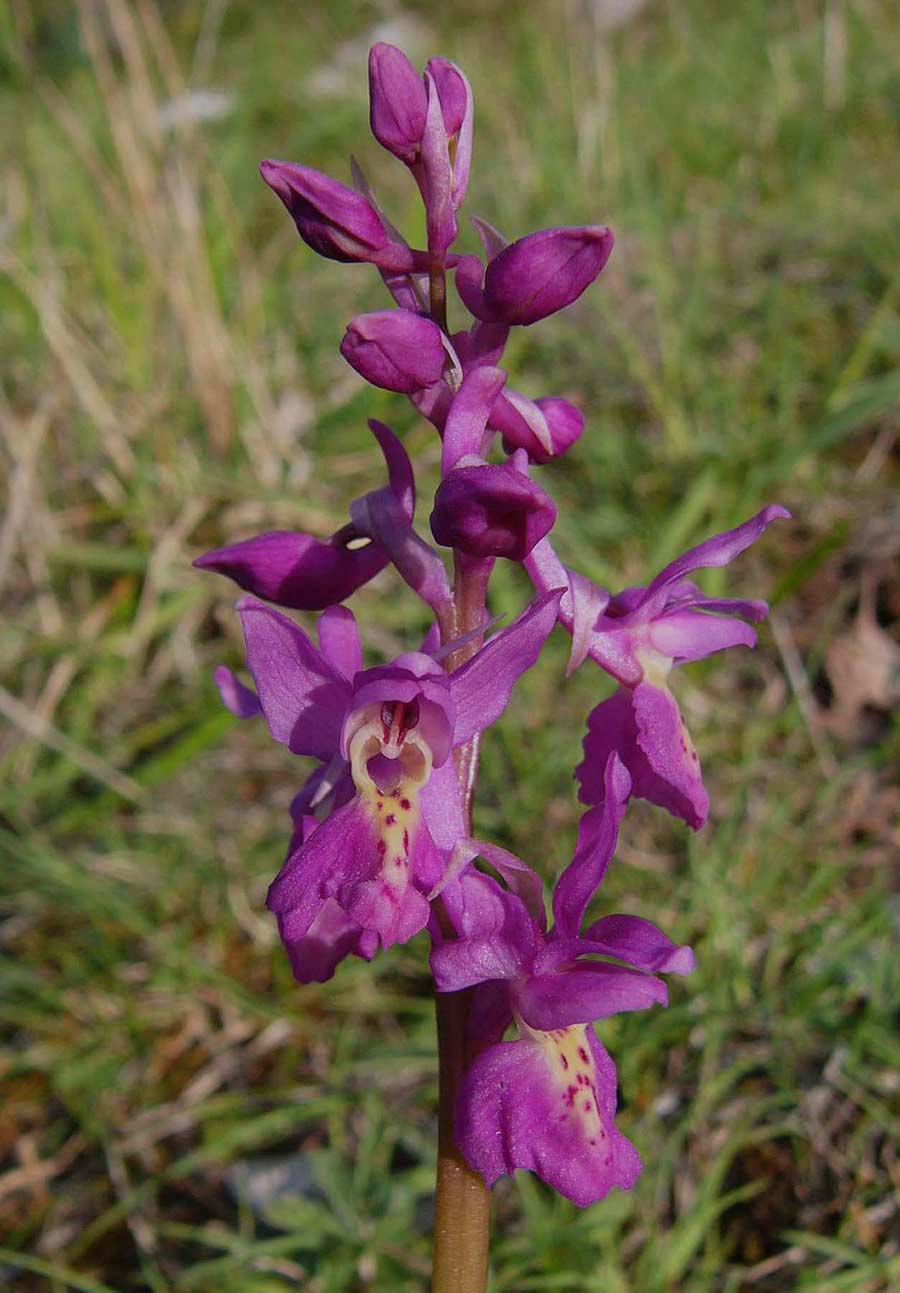O x colemanii is a plant of uncertain taxonomic status and the
subject of considerable debate among the great and the good of the orchid
world. What authorities can happily agree upon, is the fact that O x
colemanii arises from hybridization between O. mascula and O. pauciflora. The issue that divides opinion however is whether or not these
hybridization events have resulted in stabilized populations, free from the any further genetic influence from its progenitors.
Delforge comes down clearly on the side of non-stabilization and consequently
non-species status, there are however others who cite examples of populations
where neither O. mascula or O. pauciflora can
be found within a sufficiently close radius of the hybrid so as to be
capable of exerting any continued genetic input. Whilst
in our experience we have found a number of colonies where the parent
species
are in close attendance and would concede this to be the more usual
situation,
we are also aware of locations where no trace at all can be found of the progenitor species.
The pictures come from just such a colony and depict plants that show
a wide variation of flower colour, this being somewhat unusual as the most
frequently encountered colouration is the typical darker pink of O.
mascula as seen in pictres 5 and 10. In most populations the central
lip is a bright yellow to off white, with dark red spotting.
O. colemanii was named in the late 19th century by Fabrizio Cortesi in honour
of the British painter and orchid enthusiast Enrico Coleman who first crossed O.
mascula and O. pauciflora
in his greenhouse to create the hybrid that occurs naturally and
widely throughout central peninsula Italy and less commonly in
continental Greece.
The pictures here come from the central Appenines of
Umbria.
